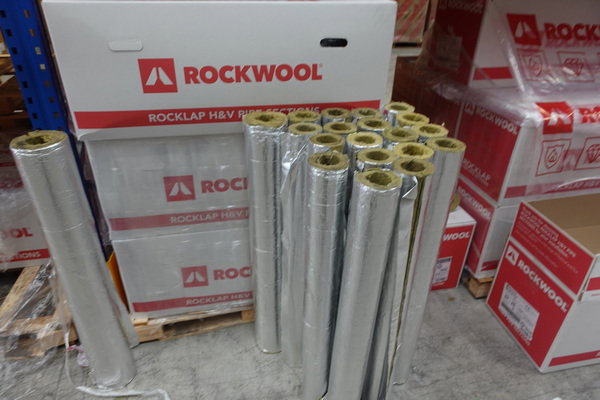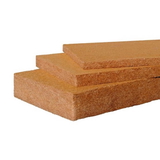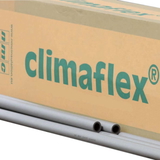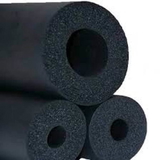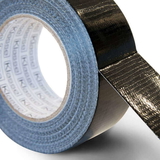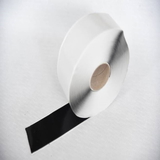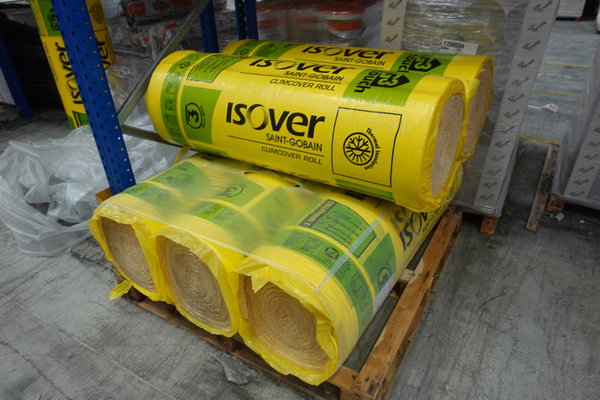- Blogs
- Types of Insulation Pallets: A Comprehensive Guide for the UK
Types of Insulation Pallets: A Comprehensive Guide for the UK

The term "insulation pallets" has two main meanings in a UK context. Primarily, it refers to specialised temperature-controlled packaging solutions used in logistics to transport sensitive goods on pallets. These solutions include rigid insulated containers, flexible thermal pallet covers, and high-performance pallet shippers. The secondary meaning refers to the bulk purchase of building insulation, such as mineral wool, delivered on a pallet for the construction industry. This guide focuses on the logistics solutions, detailing the core materials like Expanded Polystyrene (EPS), Polyurethane (PUR), and advanced Vacuum Insulated Panels (VIPs). It covers the critical importance of adhering to UK regulations from the Food Standards Agency (FSA) for food and the Medicines and Healthcare products Regulatory Agency (MHRA) for pharmaceuticals. The choice of system depends on product sensitivity, transit duration, and the operational model, balancing factors like cost, reusability, and regulatory compliance.
Introduction: Defining "Insulation Pallets" in the UK Supply Chain
In the UK supply chain, the term "insulation pallets" can lead to confusion as it encompasses two distinct concepts. For the construction trade, it simply means the bulk delivery of building insulation materials, such as mineral wool rolls or slabs, on a standard pallet. While this is a common logistical practice, the more complex and critical application of the term relates to temperature-controlled logistics.
In this primary context, "insulation pallets" refers to a range of specialised systems designed to protect pallet-sized shipments of temperature-sensitive goods during transit and storage. These solutions are fundamental to the integrity of modern supply chains, safeguarding the quality and safety of products across numerous sectors, including food and beverage, pharmaceuticals, and specialised chemicals. Without effective thermal protection, these goods are vulnerable to spoilage, degradation, and loss of efficacy, leading to significant financial losses and potential public health risks.
This guide provides a comprehensive overview of temperature-controlled pallet solutions. It will detail the different types of systems available, from basic thermal covers to advanced pallet shippers. It will explore the core insulation materials that form the basis of their performance, analyse the operational models of reusable versus single-use packaging, and outline the essential UK standards and regulations that govern their use. The guide will conclude with a look at operational best practices for maintaining cold chain integrity.
Part 1: A Guide to Temperature-Controlled Pallet Shipping Solutions
Section 1: An Overview of Insulated Pallet Systems
The selection of an insulated pallet system is not a one-size-fits-all decision. The market offers a clear hierarchy of solutions, each designed to meet different levels of thermal challenge, product sensitivity, and operational requirements. The choice moves from basic thermal covers for short-term protection against ambient fluctuations, to robust insulated containers where hygiene and durability are paramount, and finally to high-performance shippers for critical, high-value payloads where failure is unacceptable. This progression reflects a risk-management approach, where the level of packaging technology is matched directly to the value and vulnerability of the goods being transported.
Insulated Pallet Containers and Boxes ![]()
Insulated pallet containers are rigid, robust, and often reusable solutions designed for the safe transport and storage of bulk temperature-sensitive goods. These systems typically feature a double-walled construction, commonly with a durable polyethylene outer shell and an inner layer, with a core of high-performance insulation injected between the walls.
Key features of these containers are tailored for the rigours of industrial logistics. Their durable construction is built to withstand the physical demands of transportation and repeated handling. Many are designed to be stackable, which maximises space efficiency in warehouses and during transit. Secure closures and lids are standard, protecting contents from contamination and ensuring product integrity. Ergonomic handles and designs compatible with standard handling equipment like forklifts make them easy to manage within a logistics operation.
These containers are particularly prevalent in the food industry, where both temperature control and hygiene are critical. They are frequently used for transporting fresh fish, meat, and other perishable food items. Their smooth, easy-to-clean surfaces support food safety protocols. They are available in a wide variety of sizes to accommodate different shipment volumes, ranging from smaller boxes to large pallet-sized tubs with capacities of 640 litres or more.
Thermal Pallet Covers and Blankets
Thermal pallet covers, also known as thermal blankets, are flexible, lightweight layers designed to be draped over a fully loaded pallet. Their primary function is to provide a temporary thermal barrier, protecting goods from short-term exposure to adverse environmental conditions.
These covers work by mitigating the main forms of heat transfer. They create a radiant barrier that reflects solar radiation and ambient heat, and they trap a layer of air, which is a poor conductor of heat, slowing down temperature changes within the pallet load. This makes them effective at protecting goods from direct sunlight, UV radiation, frost, dust, and moisture during critical points in the supply chain, such as on airport tarmacs or loading docks.
The most common construction involves multi-layered materials, such as two layers of true aluminium foil bonded to an inner membrane of air bubble wrap. This combination provides both radiant reflection and conductive insulation. Different performance tiers are available, from single-layer covers for basic protection to more advanced double-layered versions that can be combined with conditioned water blankets to add thermal mass and extend protection time. In response to environmental concerns, innovative paper-based, recyclable alternatives are also emerging, using reflective coatings and micro-convective air pockets to achieve thermal performance.
Their application is versatile. They can serve as the primary form of protection for shipments that need to be kept at a controlled room temperature, or they can be used as a secondary layer of defence to enhance the performance of other passive shipping systems.
High-Performance Pallet Shippers
High-performance pallet shippers represent the top tier of passive temperature-controlled packaging. These are not simply containers but fully engineered and qualified systems designed for transporting high-value, strictly regulated, and extremely temperature-sensitive products over long distances and durations.
These systems are qualified through rigorous testing to maintain precise temperature ranges, such as refrigerated (2°C to 8°C), controlled room temperature (15°C to 25°C), or frozen (-25°C to -15°C), for extended periods, often 96 or even 120 hours or more. This level of performance is essential for the pharmaceutical and biopharmaceutical industries, which rely on these shippers to transport large volumes of vaccines, biologics, and other critical medicines across international supply chains.
The superior performance of these shippers is achieved through the use of advanced materials. The core insulation is often provided by Vacuum Insulated Panels (VIPs), which offer exceptionally high thermal resistance. This is combined with sophisticated Phase Change Materials (PCMs), which are engineered to absorb or release thermal energy at specific temperatures, actively regulating the internal environment of the shipper.
Designs are also optimised for logistics. Some models are collapsible, which significantly reduces their volume for storage and cost-effective return shipment, an important feature for reusable systems.
Section 2: Core Insulation Materials and Their Characteristics
The performance of any insulated pallet system is determined by its core materials. The choice of insulation involves a trade-off between thermal efficiency, durability, weight, and cost. Understanding the characteristics of these materials is essential for selecting a system that is fit for purpose.
Polymer Foams: Expanded Polystyrene (EPS) and Polyurethane (PUR)
Expanded Polystyrene (EPS) is a rigid, closed-cell foam insulation that is lightweight, cost-effective, and widely used in temperature-controlled packaging. It is a common choice for economical, single-use pallet shippers designed for standard cold chain logistics. When used in conjunction with temperature-controlled vehicles and appropriate coolants, EPS shippers can achieve performance durations of up to 120 hours, making them suitable for many intercontinental routes. Beyond containers, entire pallets can be moulded from EPS, offering a lightweight, recyclable, and pest-free alternative to traditional wooden pallets that is compliant with ISPM 15 international shipping standards.
Polyurethane (PUR) foam is another rigid polymer foam that offers a significant step up in thermal performance. Compared to an equivalent thickness of EPS, PUR provides superior insulation capability. It is also known for its high structural strength, durability, and resistance to chemicals and moisture, making it an excellent choice for robust, reusable containers. In the construction of insulated pallet boxes, PUR foam is often injected into the cavity between double polyethylene walls, creating a strong, monolithic, and highly insulated structure. It can also be laminated to corrugated board to create strong yet lightweight shippers. For larger applications, such as shipping containers, it can be applied as a spray foam to create a seamless insulating layer.
Advanced Insulation: Vacuum Insulated Panels (VIPs)
Vacuum Insulated Panels (VIPs) represent the cutting edge of passive insulation technology. A VIP is constructed from a microporous core material, such as fumed silica or fibreglass, which is enclosed and sealed within a gas-impermeable barrier film under a high vacuum. By removing most of the air, heat transfer through gas conduction and convection is virtually eliminated, resulting in exceptionally low thermal conductivity.
The primary advantage of VIPs is their thermal performance, which can be 5 to 10 times better than that of conventional foam insulation materials of the same thickness. This allows for the design of insulated shippers with much thinner walls. This reduction in wall thickness translates directly into a smaller overall package size and lower volumetric weight, which can lead to significant savings on freight costs, especially for air cargo. This high efficiency makes VIPs the material of choice for high-performance pharmaceutical shippers, where maintaining strict temperature ranges for over 120 hours is a common requirement.
However, this advanced performance comes with certain limitations. VIPs are considerably more expensive than polymer foams. They are also fragile; if the outer barrier is punctured and the vacuum is lost, the panel's insulating properties are drastically reduced. This fragility means they must be handled with care and are often encased in a protective outer shell, which can add to the overall thickness and complexity of the shipper.
Flexible Materials for Thermal Covers
The materials used for thermal pallet covers are designed for flexibility, light weight, and the ability to mitigate radiant heat transfer. The most common construction consists of a composite material with two outer layers of reflective aluminium foil that sandwich an inner core of plastic air bubble membrane. The foil layers act as a radiant barrier, reflecting up to 97% of heat from sources like the sun, while the air trapped within the bubble layer provides a degree of conductive insulation.
For reusable covers, more durable fabrics such as polyester or polyethylene are often used, providing greater resistance to tearing and wear from repeated use. As sustainability becomes a greater focus in logistics, innovative new materials are being developed. These include multi-layered, paper-based covers that are fully recyclable. They achieve their thermal performance through a combination of a white reflective outer coating to minimise heat absorption and an internal structure of micro-convective air pockets that enhance insulation.
Active Temperature Control: Phase Change Materials (PCMs) and Coolants
While the container or cover provides passive insulation to slow the rate of temperature change, active regulation within the package is achieved using coolants and Phase Change Materials (PCMs). These materials work by absorbing or releasing a large amount of thermal energy (latent heat) at a constant temperature as they change their physical state, for example, from solid to liquid.
This principle is applied using a range of products. Simple coolants include traditional gel packs and conditioned water blankets, which are effective for many standard applications. For frozen shipments, dry ice (solid carbon dioxide) is commonly used. For more precise temperature control, especially in pharmaceutical applications, advanced PCM gels are employed. These are scientifically formulated to change phase at very specific temperatures (e.g., 4°C for refrigerated goods or 18°C for controlled room temperature products), providing highly stable and reliable temperature maintenance for the duration of the shipment.
| Material | Thermal Performance (Relative) | Durability / Rigidity | Typical Thickness for Performance | Weight (per unit of insulation) | Relative Cost |
| EPS (Expanded Polystyrene) | Good | Moderate | High | Low | Low |
| PUR (Polyurethane) | Very Good | High | Medium | Medium | Medium |
| VIPs (Vacuum Insulated Panels) | Exceptional | Low (Fragile) | Low | High | High |
Section 3: Selecting the Right System: Reusable vs. Single-Use Packaging
The decision between deploying a reusable or single-use insulated packaging system is a strategic one that extends beyond a simple comparison of unit costs. It involves a detailed analysis of a company's entire supply chain, including logistics complexity, product flow, and the true total cost of ownership. The most cost-effective solution is not always the one with the lowest initial price; it is the one that best aligns with the operational realities of the business.
Reusable Systems
Reusable insulated packaging, such as durable PUR-insulated containers, is designed for multiple trips. The primary advantages of this model are rooted in long-term financial and environmental benefits.
After the initial capital investment, the per-trip cost of a reusable container can become significantly lower than purchasing a new single-use shipper for every consignment. Their robust construction provides consistent and reliable thermal performance over a long service life, reducing the risk of product damage. From a sustainability perspective, reusable systems drastically reduce packaging waste, which is an increasingly important factor for environmentally conscious businesses and their customers. This model is most effective in a "closed-loop" logistics system, where the flow of goods is predictable and the containers can be easily and economically recovered from the destination point for return to the origin.
However, the implementation of a reusable system presents considerable challenges. The initial purchase price of durable, high-performance containers is substantially higher than for their single-use counterparts. The greatest challenge lies in "reverse logistics"—the process of retrieving, transporting, cleaning, inspecting, and storing the empty containers for their next use. This process adds significant complexity and cost to the operation. If the return rate is low due to loss or damage in a complex supply chain, the anticipated cost savings can be quickly eroded by the need to frequently replenish the container fleet.
Single-Use Systems
Single-use insulated packaging, such as EPS shippers or disposable thermal pallet covers, is designed to be discarded after one journey. The main advantages of this approach are simplicity and cost predictability.
The upfront cost for each shipper is low, making it an accessible option for businesses of all sizes, especially those without the capital for a large fleet of reusable containers. The logistics are straightforward; there is no need to establish a complex and costly reverse logistics network for collection and refurbishment. This allows businesses to focus their resources on efficient outbound delivery. Budgeting is also simplified, as the packaging cost is a predictable variable for each shipment. This model is often the most practical choice for businesses with open-loop, complex distribution networks, such as those shipping to numerous different end-points nationally or internationally, where recovering the packaging would be impractical or prohibitively expensive.
The drawbacks of single-use systems are significant, particularly concerning environmental impact and long-term cost. The disposal of packaging after every shipment contributes to a large volume of waste, which is a growing concern for regulators and consumers. While the per-unit cost is low, the cumulative expense over time can exceed the total cost of a well-managed reusable system. There is also a risk that to keep costs down, lower-quality materials may be used, which could compromise product integrity if the shipment experiences unexpected delays or harsh conditions.
The calculation of Total Cost of Ownership (TCO) reveals the nuances of this choice. While a reusable container may seem more economical over 50 uses, this assumes a perfect 100% return rate. In reality, containers are lost or damaged. If a reusable container is lost and must be repurchased after only 10 uses, a single-use solution can become the more cost-effective option after just five shipments. Therefore, the viability of a reusable system is critically dependent on the efficiency and "cost of recovery" within a specific supply chain.
Part 2: UK Compliance and Operational Excellence
Section 4: Navigating Key UK Standards and Regulations
Operating a temperature-controlled supply chain in the United Kingdom requires strict adherence to regulations set by government agencies. The two key bodies are the Food Standards Agency (FSA) for food and beverages, and the Medicines and Healthcare products Regulatory Agency (MHRA) for pharmaceuticals. While both are concerned with product safety and integrity, their specific requirements and the level of scrutiny they apply differ significantly.
Food & Beverage Logistics (Food Standards Agency - FSA)
The FSA's regulations are built on the core principle that all food must be stored and transported under conditions that prevent contamination and ensure it remains safe for consumption.
For chilled foods that are likely to support the growth of pathogenic micro-organisms, the law in England, Wales, and Northern Ireland mandates that they be kept at a temperature of 8°C or below. It is important to note that this legal requirement applies to the temperature of the food product itself, not necessarily the surrounding air temperature. To ensure a margin of safety, industry best practice, as promoted by the Chilled Food Association, targets a stricter temperature of 5°C.
For frozen foods, good practice dictates storage and transport at -18°C or colder. For products specifically labelled as "Quick-frozen," this becomes a legal requirement. The regulations for quick-frozen foodstuffs stipulate that the temperature must be maintained at -18°C or colder throughout the supply chain. Brief, temporary upward fluctuations are permitted under specific circumstances: up to -15°C during transportation and up to -12°C in retail display cabinets, provided these are consistent with good practice.
Beyond temperature, FSA regulations place a strong emphasis on hygiene. Vehicles and containers used for transporting food must be kept clean and in good condition. A critical rule is the mandatory separation of raw foods from ready-to-eat foods during transport to prevent hazardous cross-contamination.
Pharmaceutical Logistics (Medicines and Healthcare products Regulatory Agency - MHRA) & Good Distribution Practice (GDP)
The distribution of medicines in the UK is governed by a much more stringent framework known as Good Distribution Practice (GDP). GDP is a mandatory quality assurance system enforced by the MHRA, which ensures that the quality and integrity of medicinal products are maintained throughout the entire supply chain, from the manufacturer to the pharmacy.
Temperature control is a central pillar of GDP. For refrigerated medicines, often referred to as "cold chain" or "fridge line" products, the required temperature range is a strict 2°C to 8°C. This range must be consistently maintained at all stages of storage and transportation, from the moment of dispatch until delivery to the end user.
A key distinction in pharmaceutical logistics is the rigorous control applied even to "ambient" or room temperature products. While food regulations are more general for ambient goods, GDP often requires that these medicines be kept within a specific, validated temperature range, such as 15°C to 25°C, or below a stated maximum like 25°C or 30°C. This reflects the fact that the chemical degradation of an active pharmaceutical ingredient due to a temperature excursion can be invisible, yet render the medicine ineffective or even harmful. In contrast, the spoilage of ambient food is often more readily apparent. This difference in risk profile leads to a much higher level of control for ambient medicines, often necessitating the use of temperature-controlled vehicles even for products that will ultimately be stored on a room-temperature shelf in a pharmacy.
Under GDP, the transportation vehicle is legally considered to be an extension of the warehouse. The wholesale distributor retains full responsibility for the product's quality and integrity throughout its journey. This necessitates the use of validated transport systems and calibrated temperature monitoring equipment to provide a verifiable record of the conditions during transit. The MHRA expects operators to adopt a risk-based approach, which includes performing temperature mapping exercises on storage areas and vehicles to identify potential hot and cold spots. The data from these mapping studies must then be used to determine the correct placement of permanent temperature monitoring probes to ensure they capture the most extreme fluctuations.
Section 5: Best Practices for Maintaining Cold Chain Integrity ![]()
Adherence to regulations is the baseline for temperature-controlled logistics; operational excellence is what ensures consistent success. Implementing best practices at every stage of the process—from preparation to handling and monitoring—is crucial for protecting product integrity and minimising risk.
System Preparation and Pre-conditioning
The successful use of a passive insulated shipper begins long before the product is loaded. Proper preparation, or pre-conditioning, is a critical step that is often overlooked.
The insulated container or shipper itself should be pre-chilled. This is done by placing it in a temperature-controlled environment (or placing sacrificial ice packs inside it) for at least an hour before use. This removes residual heat from the insulation and container walls, preventing an initial temperature spike when the product is loaded.
Even more critical is the conditioning of the coolants. Gel packs or ice packs taken directly from a standard freezer will be at a temperature of around -20°C. If placed directly into a shipper with products that need to be kept chilled (e.g., between 2°C and 8°C), they can easily freeze and destroy the payload. To prevent this, coolants must be "conditioned" by leaving them at room temperature until their surface temperature rises to 0°C, which is typically indicated by the formation of condensation or beads of water. Only at this point are they safe to use for refrigerated shipments. The specific conditioning process may also need to be adjusted based on the season; summer transport may require fully frozen coolants, while winter transport might use coolants conditioned from a refrigerator to prevent over-chilling.
Effective Loading and Handling Protocols
The integrity of the cold chain is most vulnerable during transitions, such as moving goods from a warehouse to a vehicle. Minimising "dwell time"—the period that temperature-sensitive products are exposed to uncontrolled ambient temperatures on loading docks or tarmacs—is essential. This requires efficient, well-planned loading and unloading procedures.
Correct packing of the insulated shipper is also vital. The payload should be arranged to allow for adequate air circulation around it. Any empty spaces or voids within the shipper should be filled with dunnage material, such as bubble wrap or crumpled paper, to prevent the load from shifting and to minimise air volume, which can create hot or cold spots. For accurate monitoring, the temperature data logger or sensor should be placed in the thermal centre of the payload, typically surrounded by the product, not on the top or sides.
Finally, physical handling protocols must account for the nature of the packaging. Staff must be trained to handle insulated containers correctly to avoid damaging them. This is especially important for high-performance shippers that use fragile Vacuum Insulated Panels, as a puncture can compromise the entire system.
The Role of Temperature Monitoring and Data Logging
Continuous temperature monitoring is not merely a best practice; it is a fundamental requirement of GDP and a key component of food safety management systems like HACCP. It provides the verifiable evidence needed to demonstrate that the cold chain has been maintained.
Modern logistics relies on calibrated, electronic temperature monitoring systems. These range from simple data loggers that record the temperature history for later download, to advanced real-time IoT sensors that transmit data continuously, providing complete end-to-end visibility of a shipment's condition and location.
These dated temperature records form a critical audit trail. They are essential for proving compliance to regulators like the MHRA and must be retained for specified periods—for example, at least one year for quick-frozen foodstuffs. In the event of a temperature excursion (a deviation from the required range), these data logs are indispensable for investigating the incident, assessing the potential impact on the product, and determining whether the goods are safe to use or must be quarantined and destroyed.
Part 3: Understanding Pallets of Building Insulation
Section 6: Bulk Insulation for the Construction Industry
While the primary focus of this guide is on temperature-controlled logistics, it is important to address the other common meaning of "insulation pallets" to provide a complete picture for all users. In the UK construction and building supplies industry, the term refers to the bulk purchase and delivery of building insulation materials on a standard wooden or plastic pallet.
This method of procurement is standard practice for large-scale construction or renovation projects. The materials commonly sold in this format include mineral wool products, such as Rockwool slabs (made from rock mineral wool) and Knauf rolls (made from glass mineral wool). These materials are used for both thermal and acoustic insulation in various building applications, including lofts, cavity walls, and floors.
Purchasing insulation by the pallet offers several distinct advantages for trade buyers. The most significant benefit is economic; buying in bulk reduces the cost per unit, allowing for better value on large projects. Logistically, it is more efficient. A single delivery of a full pallet reduces transport costs and minimises the risk of damage that can occur with multiple smaller deliveries. It also ensures a ready supply of materials on-site, preventing delays and improving productivity. Finally, sourcing a large quantity from a single batch ensures uniformity in the product, which can be important for maintaining consistent performance across a large installation.
Conclusion: A Strategic Approach to Insulated Pallet Selection
The selection and implementation of an insulated pallet solution is a complex but critical task for any logistics professional managing temperature-sensitive goods in the UK. As this guide has detailed, the choice is not simply about finding a box to keep things cold. It is a strategic decision that requires a thorough evaluation of multiple interconnected factors.
The process must begin with a clear understanding of the product's specific needs: its sensitivity to temperature fluctuations, the precise temperature range it requires (be it frozen, refrigerated, or controlled ambient), and its value. This must be weighed against the realities of the supply chain: the expected duration of transit, the complexity of the distribution network, and the environmental conditions the shipment will face.
The financial implications extend far beyond the initial purchase price of the packaging. A Total Cost of Ownership analysis must account for the operational model—whether a closed-loop system makes reusable containers viable or an open-loop network necessitates single-use shippers. This calculation must also factor in freight costs, which are influenced by the size and weight of the packaging solution itself.
Above all, the entire process must be framed by the stringent regulatory landscape of the UK. Compliance with the distinct and demanding standards of the FSA for food and the MHRA's Good Distribution Practice for pharmaceuticals is non-negotiable. This requires not just appropriate packaging but also validated processes, robust temperature monitoring, and meticulous record-keeping.
Ultimately, choosing the right insulated pallet system is an exercise in risk management. It is about investing in the appropriate level of technology and process control to protect product integrity, ensure public safety, meet legal obligations, and safeguard the financial and reputational standing of the business.
Legal Disclaimer
The information contained in this article is provided for general informational purposes only. It is not intended to be, and should not be used as, a substitute for professional, legal, or technical advice in any specific situation. The content is based on information available at the time of writing and may not reflect the most current regulatory developments or industry standards.
We make no representations or warranties of any kind, express or implied, about the completeness, accuracy, reliability, or suitability of the information contained herein for any particular purpose. Any reliance you place on such information is therefore strictly at your own risk. In no event will we be liable for any loss or damage, including without limitation, indirect or consequential loss or damage, arising out of, or in connection with, the use of this article.
You should not act or refrain from acting based on this information without first seeking professional advice from a qualified expert in logistics, supply chain management, or regulatory compliance. Before specifying, procuring, or using any materials, packaging, or processes for your specific applications, you must conduct your own thorough risk assessments and validation to ensure they are suitable and compliant with all applicable laws and regulations, including official guidance from bodies such as the Food Standards Agency (FSA) and the Medicines and Healthcare products Regulatory Agency (MHRA).

Samuel Hitch
Managing Director
Buy Insulation Online.
Leave A Reply
Your feedback is greatly appreciated, please comment on our content below. Your email address will not be published. Required fields are marked *
